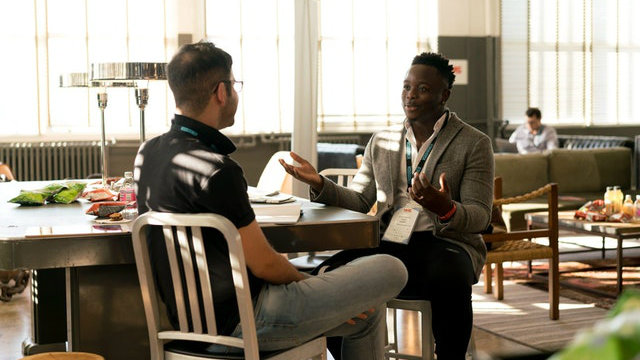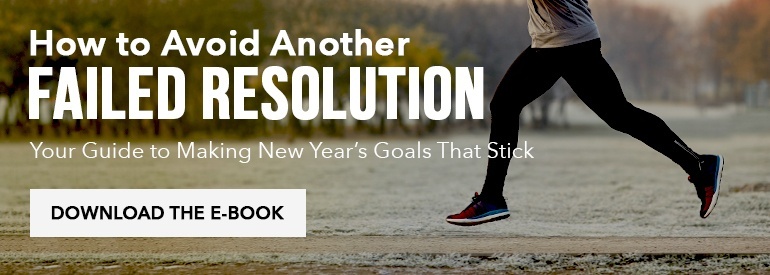 Reading Time: 6 minutes
Reading Time: 6 minutesI recently met a friend for lunch. We spent an hour catching up on personal details, sharing ideas, and soothing each other’s confessed failures. Our dialogue undulated back and forth naturally as we took in each other’s words, facial expressions, voice modulations, and body language.
After this short rendezvous I felt balanced, happier, and more “me.” And as I strolled past a window and glanced at its display of holiday gifts shimmering in metallic foil, I thought to myself, “That conversation was the best gift I could have received.”
The unfolding of a conversation is like unwrapping a present. It sets a vibe and pace to the ritual. If buying gifts for everyone in your life overwhelms your nervous system as well as your wallet, replace the material approach with an ethereal one. This holiday season, give the gift of a heart-felt conversation.
You might think, “No biggie. I have conversations all day long.” And some people have a knack for being really present when conversing. But most of us don’t. So, let’s uncover what it takes to create a real gift of gab.
Being in the Same Physical Space Together
First, it’s best to share a real space together so you pick up on the full energy of the other person. According to Forbes:
“So potent is this nonverbal link between individuals that, when we are in genuine rapport with someone, we subconsciously match our body positions, movements, and even our breathing rhythms with theirs. Most interesting, in face-to-face encounters the brain’s ‘mirror neurons’ (the neural mechanism that fires when we perform an act or see another perform that same action) mimic not just behaviors, but sensations and feelings as well.”
As humans, we thrive on contact. But, don’t worry, you don’t have to be a hugger. Simply sitting next to someone gives dividends.
The Best Gift Always Has an Authentic Intention
While physically showing up is important, the real gift lives in our intention. It not only impacts what is communicated; it also establishes the balance of power. Let’s illustrate with a gift analogy.
- Scenario #1: Envision someone attacking a carefully wrapped giftbox with reckless abandon, snapping off ribbons and shredding paper in pursuit of its contents. No eye contact, no pause to relish the moment. In this scenario, the intent is to self-serve and own the experience.
- Scenario #2: Now imagine someone admiring a giftbox, gingerly slipping off the ribbon, massaging the tape loose to preserve the paper. A pause allows for eye contact and a deep breath. Tissue paper is peeled back for the reveal. In this case, the intent is to build rapport and share the experience.
Intent exists in every conversation and it’s often buried deep in our subconscious. It lives in our word choice, pace, volume, tone, and body language. Intent is often easier to identify in others than to recognize and adjust in ourselves (isn’t that always how it goes?).

Start by Observing Others in Conversation
A small-talker is congenial. A great storyteller is compelling. The person who dominates a conversation is neither and is usually too wrapped up in his- or herself to notice.
We all have moments when we need to share every detail of an event with a close friend or family member. However, if taking center stage is habitual for you, then your listener is likely tortured or tuned out. An easy question to ask yourself if you’ve had the microphone for more than a few minutes is: WAIT (“Why Am I Talking”).
It can also be helpful to notice how others engage in conversation. Observe how other people converse from a seat of curiosity, not judgment. The purpose is not to blame or shame; it’s to learn by using real experience. Once you have a good sense of best and worst behavior, start practicing your own mindful speaking.
So, let’s discuss some simple rules of a mindful speaker. But, beware, this practice can be as tough as any bootcamp.
Should You Really Be Saying That Right Now?
Entering a conversation to connect is not only about how much talking time you own, but the nature of your speech as well. There are four questions you can ask yourself to test your potential words:
- Is what I am about to say true?
- Is it kind?
- Is it necessary?
- Is it the right time?
As you can imagine, passing thoughts through all four of these gates before the words leap off your tongue requires slowing down. This gives you the time to course-correct and use connectors versus separators when it comes to your communication.
Examples of connectors:
- Slower speech
- Natural and assuring tone
- Voice volume that matches the environment
- Avoidance of “I,” “me,” and “my” overkill
- Concise descriptions that entice rather than overwhelm
- Pauses for others to respond or contribute
- Questions that shift the focus to your conversation partner
Examples of separators:
- Talking faster or louder than the norm
- Words that are harsh or judgmental
- Gossip
- Fabrication and exaggeration
- Rambling or excessive tangents
- Passivity (not speaking up when you should)

How Are Your Listening Skills?
Of course, the gift of conversation isn’t just about what you say — it’s also about truly being present for the words, emotions, and subtle communications of your conversational partner.
We all want to be heard, really heard. “Listeners” who are distracted (pretending to listen but not engaged) or who use their first sentence to reroute the conversation back to themselves are not actually listening. Their approach is a “me, me, me” message that builds separation, not connection. Conversely, active listeners approach a conversation (and a person) with curiosity and the goal of deeper understanding.
According to the Korn Ferry Institute’s The Science of Listening:
“Our listening brain is wired to do exactly what active listening discourages: evaluate input, predict outcomes, make judgments and perform triage, all on a moment-to-moment basis. That mode of functioning, according to recent thinking in cognitive neuroscience, evolved as the brain’s strategy to use its finite neural capacity efficiently. As we take in the stimuli of the speaker’s words, the prefrontal cortex, which enables organizing and prioritizing, lights up with activity as we continually vet the incoming information against what we know, our past experiences and our theoretical construct of the future.”
With the vast amount of information we must process, our brain is perfectly designed to grab information, break it into bits, and connect it to knowledge relevant to our past experiences. Being fully present to every bit of information coming at us would waste enormous time.
And that’s what makes active listening such a gift. It takes dedication — something we you reserve for the most important occasions.
How to Give the Best Gift of You This Season
Here’s how to make, wrap, and deliver your best gift of conversation and active listening:
- Notice your urge to speak and see if you can “bite your tongue.”
- Fully engage with your eyes and body (shift how you are positioned if needed).
- Put down your phone or items that may lure you away.
- Try not to connect what the person is saying with your own experiences.
- Try not to work on what you are going to say next. Just relax and listen.
- Incorporate parts of what the person said in a response back.
- Ask questions to go deeper without the intent to judge or compete.
- With someone you know well, find out something new.
As you gather for the holidays, it’s likely you will be catching up with folks you don’t see on a regular basis. Now is the perfect time to practice spreading words of kindness and making connections that go a little deeper. Set an intention as a speaker and a listener, to share the space and enhance the quality of your conversations, a gift to yourself and the world.






